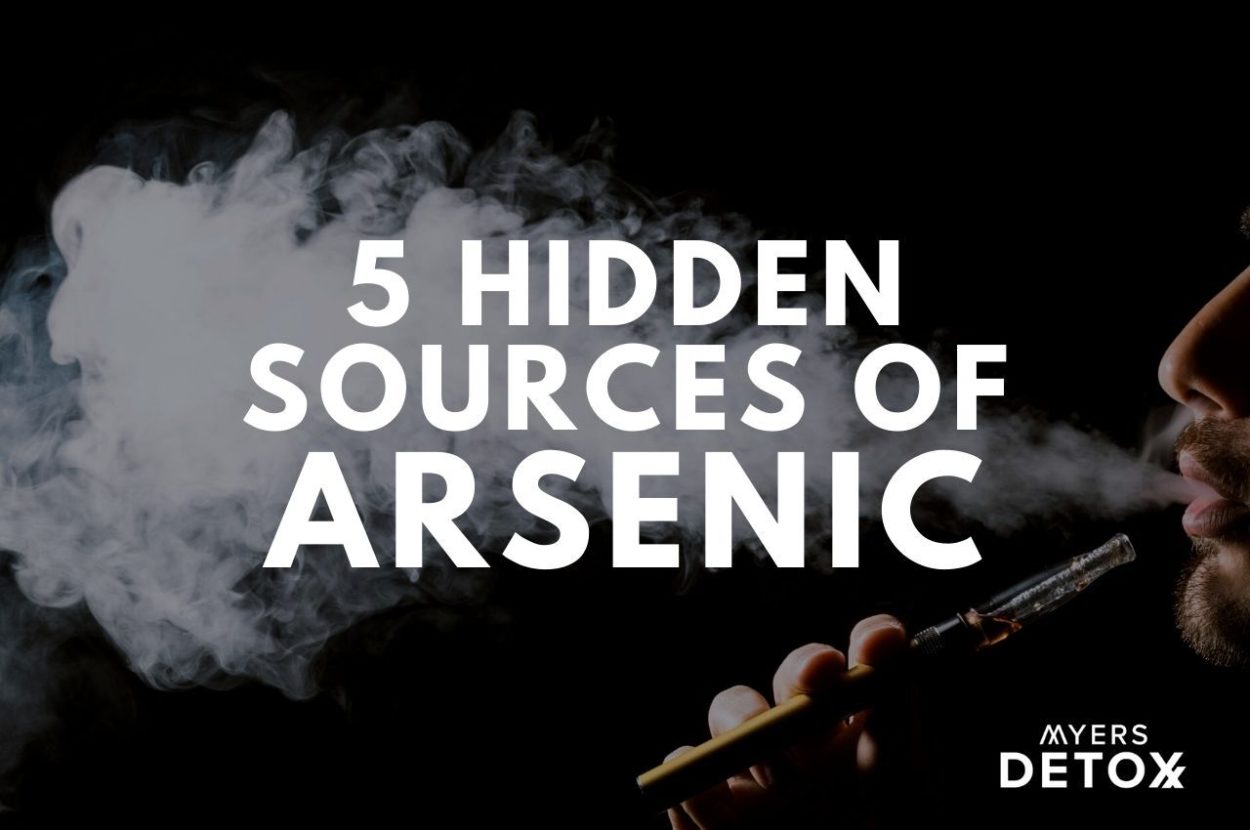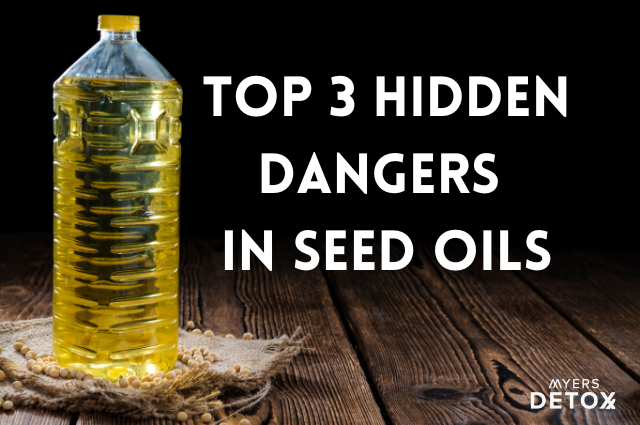Arsenic is one of the most common environmental toxins worldwide[1]. Millions of people across the globe suffer from arsenic toxicity[2], and as the world gets more polluted, arsenic exposure is a growing concern.
This article covers five hidden sources of arsenic and how to avoid them in your daily life. I’ll also talk about how to detox from everyday living so that you can support your health and maintain a clean and healthy lifestyle.
Arsenic is in our water, air, soil, and food[2]. Most of us are exposed to it in small amounts on a daily basis.
Over time, arsenic builds up in your organs, and after years of chronic exposure, it can cause serious health problems. Chronic, low-level arsenic exposure has been linked to[3]:
- Weight gain/resistant weight loss
- Fatigue
- Brain fog
- Memory problems associated with aging
- Impaired cardiovascular and circulatory function
- Unbalanced blood sugar levels
- Skin, lung, and bladder issues
- Kidney issues
- Infertility and other reproductive issues
- Lower IQ
- Red, itchy, or flaking skin
- Skin lesions
1. Tap Water
Arsenic is one of the most common contaminants in drinking water worldwide[2]. It dissolves into liquids very easily, which means if arsenic ends up in soil (from manufacturing, pesticides, coal burning, and other sources), a lot of that arsenic will make it into the water supply.
A 2018 study on arsenic exposure noted that “drinking water contaminated with inorganic arsenic is a major route of exposure in the United States”[4]. On a more positive note, they also found that arsenic levels in U.S. tap water are gradually decreasing, which is a sign that new drinking water purity laws are making tap water safer.
However, contaminated tap water is currently still a major concern. To decrease your heavy metal exposure, stick to filtered water or buy water bottled in glass.
Arsenic contamination in water is not only a concern in the US, but also in Argentina, Bangladesh, India and many other countries. Also be wary of drinking unfiltered well water, as arsenic is a common contaminant in well water.
2. Pesticides
Arsenic has been a common pesticide ingredient for decades[5].
Most inorganic arsenic pesticides were banned in North American in the mid-1990s. However, if you were alive before then, you may not be safe from the effects.
A 2017 study looked at people living in a heavily-sprayed arsenic pesticide area in the ‘70s and ‘80s. The study found many of the residents developed arsenic-related cancer and skin conditions, nearly 40 years after the exposure[5].
In addition, many countries that export produce and meat still allow arsenic-based pesticides. For these reasons, it’s a good idea to eat organic food whenever possible.
One arsenic-based pesticide is still common in the U.S. It’s called monosodium methyl arsenate (MSMA), and it’s still used today in lawncare and cotton farming.
Golf courses often use MSMA to maintain their grass, and arsenic from the MSMA bleeds into nearby water and soil. Studies show that golf courses contain moderate to high levels of bioavailable (easily absorbed) arsenic[6].
3. Air and Soil Pollution
Arsenic is a byproduct of coal burning, and living near a coal-fired power plant can cause an increase in arsenic levels in both air and soil.
One study found that people who lived near a coal plant showed significantly higher arsenic toxicity than average [7]. Those who grew their own food in the arsenic-tainted soil had even higher levels of urinary arsenic.
Unfortunately, coal-burning power plants are the second most common power plant in the United States (they were the most common, until natural gas plants surpassed them in 2015) [8].
Coal plants are especially common in New England and Southern California. As a result, soil and air in those areas tend to be more polluted with arsenic [9].
If you live in a highly contaminated area, you’re likely exposed to more of these pollutants than average.
4. Vape/E-Cigarette Liquid
Vaporizers are billed as a healthier alternative to smoking, but recent research suggests that if you vape, you may be inhaling toxic heavy metals.
A 2018 study found that the heating coil in vaporizers transfers heavy metals to the vapor, which you then inhale [10]. Samples contained a variety of heavy metals, including arsenic, lead, chromium, and nickel.
Vaping is not a healthier alternative to smoking. If you’re trying to quit cigarettes, pinch off the tip, where most of the toxins are added to the cigarette. Also consider nicotine gum or spray, hypnotherapy or talk to your doctor about other options.
5. Building Materials (Pre-2003)
If your home was built before 2003, it may contain dangerous levels of arsenic.
Before 2003, a lot of lumber was treated with chromated copper arsenate (CCA), a pesticide used to prevent wood rot and termites [11]. Many older wood playgrounds for children also use this type of wood.
CCA is a known carcinogen, meaning it has the potential to cause cancer. It can cause skin problems ranging from itching and redness to skin cancer. It also absorbs through the skin and can reach your organs[11].
You’ll find CCA on older, exposed outdoor lumber like wooden exteriors of homes, decks, railings, picnic tables, and wood playgrounds [12].
The Environmental Protection Agency (EPA) banned new use of CCA in December of 2003, after a study found that children exposed to arsenic-treated wood had a higher risk of cancer[12].
If your home was built before 2003 and you have exposed wood on the exterior, a wooden deck, railings, or other outdoor wood, consider replacing it. Indoor wood (like the framing wood in your home) should be arsenic-free.
How to Detect Arsenic
Over time, arsenic builds up in your heart, liver, kidneys, and lungs[13]. And as you get older, daily low-level exposure can contribute to chronic health problems like the ones listed above [14].
If you think you’ve been exposed to this pollutant and may have high levels of it in your system, the best thing you can do is test your arsenic levels.
I recommend a Hair Tissue Mineral Analysis (HTMA) test because it’s the least expensive and most convenient way to test your arsenic levels.
HTMA testing measures heavy metal and mineral concentrations in your hair, which is one of the most common places that heavy metals like to hide. It’s a good way to get a highly accurate snapshot of what’s going on in your body without invasive procedures or expensive scans.
The HTMA testing process is simple (you don’t even need to leave your house). You get a digital kit sent to your email, then you send in your hair sample, and get your results within a few weeks. Testing is both accurate and comprehensive –– an HTMA test will give you information about a wide variety of heavy metals, including arsenic.
Once you have your HTMA test results, you can look at them with a trained practitioner and come up with a personalized plan to support your body’s natural detoxification.
If you think you’ve been exposed to health hazards like arsenic and it may be hiding in your system, order a Hair Tissue Mineral Analysis. From there, you can plan your next steps to reclaim your vitality.
*Please note that A Hair Mineral Analysis (HTMA) is not intended to diagnose, treat, cure, reverse, or prevent any disease. It is not intended to replace any other medical test(s) that may be prescribed by your medical doctor.










